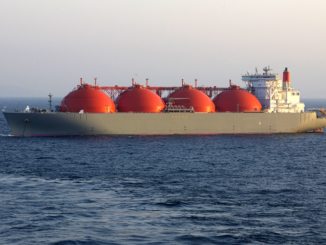
In the first half of 2025, China has ramped up its coal power infrastructure at a pace not seen in nearly a decade, commissioning 21 gigawatts (GW) of new capacity amid ongoing efforts to balance energy security with its green transition goals.
This surge comes as the nation continues to dominate global coal demand, with projections indicating that coal-fired generation could hit between 80-100 GW for the full year.
While renewables like wind and solar are expanding rapidly, coal remains the backbone of China’s energy system. But where does all this coal come from? In this article, we’ll dive into China’s complete energy mix, the latest on coal and nuclear plant commissioning, and the key suppliers fueling its coal appetite.
China’s Energy Mix: Coal Still King, But Renewables Rising
China’s energy landscape is a complex blend of traditional fossil fuels and burgeoning clean sources. As of mid-2025, coal accounts for approximately 56% of the country’s electricity generation mix, down slightly from previous years due to record additions in renewables.
Are you Paying High Taxes in New Jersey, New York, or California?
Hydropower contributes about 14%, wind power 11%, and solar has seen explosive growth, with 39.6 GW added in just the first two months of 2025 alone.
Nuclear energy makes up around 5% of power generation, while natural gas and oil play smaller roles in the electricity sector but are significant in total primary energy consumption.
Looking at the broader primary energy mix (including transport and industry), coal dominates at 60.9%, followed by oil at 18.3%, natural gas at 7.9%, nuclear at 2.8%, and hydro at 2.6%.
Low-carbon sources now generate 38% of China’s electricity, inching closer to the global average of 41%.
This shift has helped reduce CO2 emissions per kilowatt-hour to a record low of 492 grams in the first half of 2025, reflecting a 1.6% year-on-year drop in overall emissions during the first quarter.
Despite these gains, coal’s role is entrenched, especially in coal-rich provinces like Inner Mongolia, Shanxi, and Shaanxi. China’s strategy emphasizes leveraging domestic reserves while importing to meet demand spikes, ensuring energy reliability amid rapid economic growth in sectors like EVs, data centers, and 5G networks.

Surge in Coal Plant Commissioning: A 9-Year High
China’s coal power sector is experiencing a construction boom. In the first half of 2025, the country commissioned 21 GW of new coal capacity—the highest level since 2016.
This follows 30.5 GW commissioned in 2024, down from 49.8 GW in 2023, but the pace has accelerated again.
Approvals for new projects totaled 25 GW in H1 2025, while construction began on 46 GW, building on 97 GW initiated in 2024—the most since 2015.
As of mid-2025, China operates 3,820 coal power units with a total capacity of 1,544 GW, of which 1,137 GW are operational.
Globally, China and India accounted for 87% of new coal capacity commissioned in H1 2025 and 92% of all new proposals in 2024.
This expansion is driven by energy security concerns, despite a slight dip in coal generation in H1 2025 due to booming renewables. Coal’s share in power output fell to 51% in June 2025, but overall consumption grew 1.2% in 2024, reaching an all-time high.
Critics argue this contradicts China’s climate pledges, but proponents highlight that new plants are more efficient and often replace older, dirtier ones. Total projected output for 2025 could reach 80-100 GW, underscoring coal’s enduring role.
Nuclear Power: Steady Growth, But Lagging Behind Coal
In contrast to coal’s rapid buildup, China’s nuclear sector is expanding at a more measured pace. Under the 14th Five-Year Plan, the country aims for 70 GW of nuclear capacity by the end of 2025, with 25 reactors under construction adding around 30 GW.
In April 2025, the State Council approved 10 new reactors across five projects, worth about $27 billion, pushing nuclear’s share toward 10% by 2040.
Key milestones include the completion of hot functional testing at Sanao-1 and expected grid connections for units like Xiapu 1 and Zhangzhou 2 in 2025.
In 2024, six reactors were connected globally, with China contributing significantly, and nuclear output rose 6% year-on-year.
China now has 58 operational plants as of late 2024, with ambitions for 150 new reactors by 2035.
However, nuclear additions are dwarfed by coal—46 GW of coal under construction in H1 2025 alone outpaces nuclear’s incremental growth. Innovations like a thorium molten-salt reactor planned for the Gobi Desert in 2025 highlight China’s push for advanced tech.
Who Supplies China’s Coal? Top Importers Revealed
China’s coal imports hit a record high in 2024, rising 14.4% to over 500 million metric tons (Mt), driven by lower global prices.
In 2025, imports remain robust, with seaborne volumes estimated at 31.9 Mt in February alone.
The top suppliers include:
Russia: Leading with $10.4 billion in exports to China in 2024, up significantly year-on-year.
Australia: $9.54 billion, with volumes surging 65% in Jan-Oct 2024 to 65.6 Mt.
Mongolia: $8.27 billion, a key overland supplier.
Indonesia: $6.71 billion, historically the largest volume supplier with millions of tons annually.
Canada: $2 billion, rounding out the top five.
Coking coal imports, crucial for steelmaking, rose 19.7% to 121.7 Mt in 2024, with Australia crossing 10 Mt in imports.
Overall, imports account for about 1.4% of China’s total coal supply, but they play a vital role in filling gaps from domestic production.
Looking Ahead: Balancing Act in Energy Transition
China’s coal surge underscores the challenges of transitioning the world’s largest energy consumer. While nuclear and renewables are scaling up—wind and solar now exceed thermal power capacity in some metrics— and coal’s reliability keeps it at the center. Without the grid stabilization of nuclear and coal, the Chinese grid would collapse. The technology is not there to just run a grid on wind, solar, and storage.
Investments in grids and storage reached $88 billion in 2025, supporting this mix.
As global coal demand grows, led by China and India, the nation’s import dependencies on Russia, Australia, and others will remain key watchpoints for energy markets. One thing people often overlook is the cost differences faced by Chinese companies in wind and solar components. They get them a lot cheaper than in Western countries, and it is not even close.
Stay tuned to Energy News Beat for more updates on global energy trends.
Avoid Paying Taxes in 2025
Crude Oil, LNG, Jet Fuel price quote
ENB Top News
ENB
Energy Dashboard
ENB Podcast
ENB Substack







